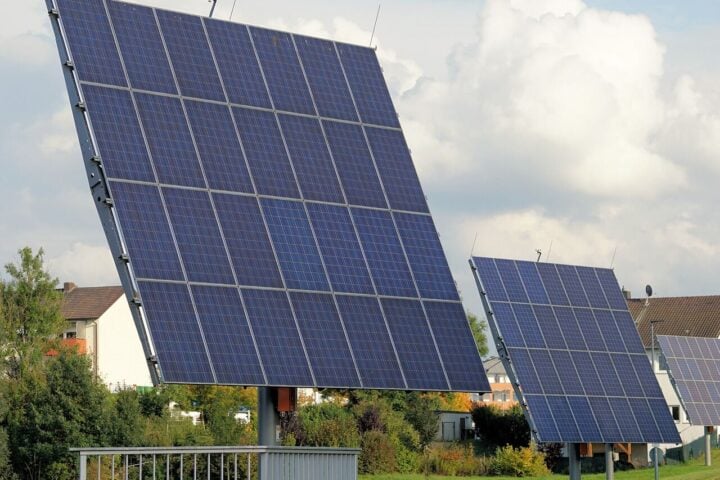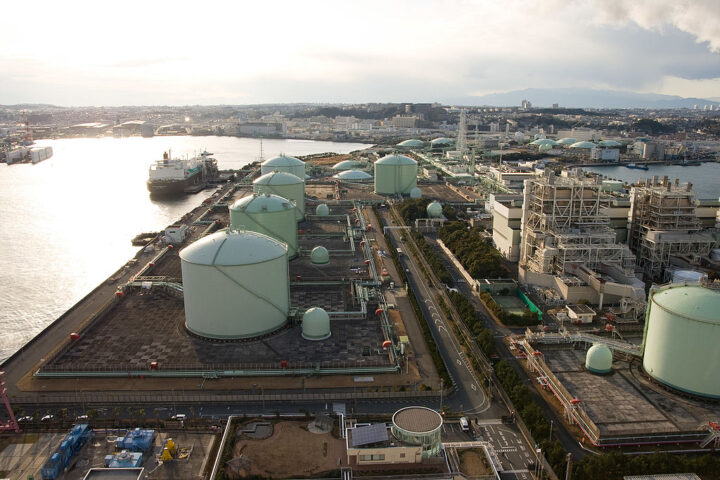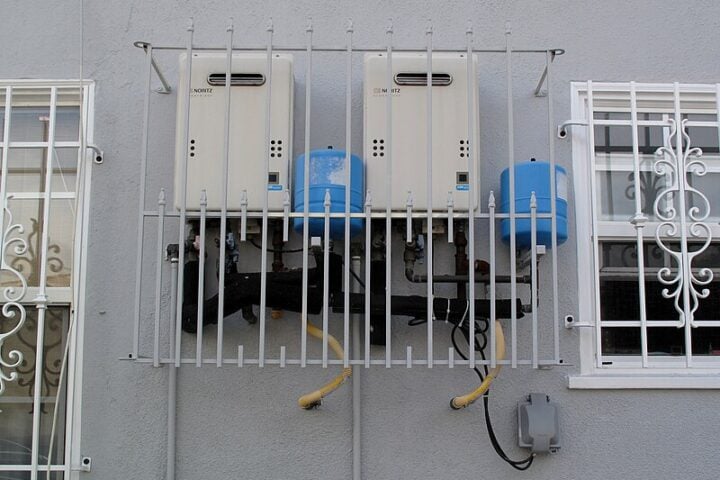Saudi Arabia has made its most aggressive move in the oil markets by cutting May crude prices for Asian buyers to four-month lows while simultaneously participating in an unexpected OPEC+ production increase. The kingdom appears to be prioritizing market share over price stability in a rapidly evolving energy landscape.
Saudi Aramco, the state oil giant, slashed its May official selling price (OSP) for flagship Arab Light crude by $2.30 per barrel, pricing it at a premium of just $1.20 above the Oman/Dubai benchmark average, according to the company’s pricing document released on Sunday, April 6, 2025. This marks the steepest single monthly reduction in more than two years and the second consecutive monthly price cut.
Cuts for other destinations were smaller, with Northwest Europe and Mediterranean buyers seeing $0.50 reductions against the ICE Brent benchmark, while U.S. customers face a modest $0.20 cut against the ASCI (Argus Sour Crude Index).
The move follows a surprise decision by eight key OPEC+ members on Thursday, April 3, to accelerate the unwinding of production cuts by adding 411,000 barrels per day (bpd) to global supply in May – triple the expected increase and representing approximately 0.4% of global supply.
According to Reuters, Saudi Arabia aims to defend its market share in Asia by adjusting its official selling prices (OSPs) in response to competitive pressures, particularly from discounted Russian crude.
Market Response and Economic Context
Oil markets reacted sharply to the combined news of OPEC+ supply increases and Saudi price cuts. Brent crude futures tumbled nearly 11% in the week ending April 4, hitting three-year lows, while West Texas Intermediate (WTI) experienced similar declines.
Adding to market pressure, President Donald Trump’s administration recently announced new tariffs that intensified global economic concerns. Though oil and petroleum products were exempted from these tariffs, the broader trade tensions have heightened recession fears and dampened demand outlooks.
The spot premium for Dubai crude averaged just $1.38 per barrel in March, down dramatically from $3.33 in February, reflecting softening market fundamentals and increased competition. Russian supplies have been particularly disruptive, with more barrels returning to Asian markets following earlier disruptions caused by U.S. sanctions on Russian energy trade.
Saudi Arabia’s pricing strategy for Asia carries outsized importance in global oil markets. The kingdom’s OSPs influence approximately 9 million barrels per day of Middle Eastern crude exports to Asia, with producers like Kuwait, Iraq, and Iran typically following Aramco’s lead.
Similar Posts:
Analysts from ING commented, “OPEC+ cited healthy fundamentals and a ‘positive market outlook’ for the move. However, we believe tariff uncertainty clouds the outlook for demand and prices.”
“This could raise fears of the Kingdom reverting to the market share strategy of 2015 and 2016 when OPEC was unable to respond effectively to rising U.S. supply,” said Callum Macpherson, head of commodities at Investec.
“However, it does not look that serious yet. This could also be in response to producers like Iraq and Kazakhstan who consistently produce above their quota,” he said.
According to Reuters, Saudi Arabia advocated for a significant policy shift within OPEC+ by pushing for a substantial increase in oil production, primarily aiming to penalize member countries like Kazakhstan and Iraq for persistently exceeding agreed production limits.
Saudi Arabia has used pricing as a strategic tool before. During 2014-2016, the kingdom maintained high production despite falling prices to pressure higher-cost U.S. shale producers. In March 2020, a brief but intense price war with Russia sent oil prices plummeting before a new agreement was reached.
The current situation differs in key aspects but demonstrates Saudi Arabia’s continued willingness to use its pricing power aggressively when market share is threatened.
Outlook and Implications
As markets digest these developments, attention now turns to several key factors:
- Whether other Middle Eastern producers will match Saudi Arabia’s price cuts for their own May cargoes
- How Asian refiners will respond to the more attractive pricing
- Whether the increased OPEC+ production will be fully implemented or if some members will continue to underproduce
- The impact of ongoing trade tensions and recession fears on global oil demand

For oil consumers globally, the current market dynamics may provide temporary relief in the form of lower energy prices. However, the volatility creates planning challenges for both producers and consumers throughout the energy supply chain.
The oil industry now waits to see if Saudi Arabia’s strategy succeeds in securing its market position, or whether it will trigger a broader competitive response that could further destabilize an already nervous market.
Full Pricing Details
Below are the complete May 2025 official selling prices (FOB) in U.S. dollars per barrel.
Saudi term crude supplies to Asia (vs. Oman/Dubai average):
| Grade | May | April | Change |
| Super Light | +$1.75 | +$4.05 | -$2.30 |
| Extra Light | +$1.00 | +$3.30 | -$2.30 |
| Light | +$1.20 | +$3.50 | -$2.30 |
| Medium | +$0.65 | +$2.95 | -$2.30 |
| Heavy | -$0.50 | +$1.80 | -$2.30 |
Prices for United States (vs. ASCI):
| Grade | May | April | Change |
| Extra Light | +$5.85 | +$6.05 | -$0.20 |
| Light | +$3.60 | +$3.80 | -$0.20 |
| Medium | +$3.70 | +$3.90 | -$0.20 |
| Heavy | +$3.25 | +$3.45 | -$0.20 |
Prices for Northwest Europe (vs. ICE Brent):
| Grade | May | April | Change |
| Extra Light | +$4.15 | +$4.65 | -$0.50 |
| Light | +$2.55 | +$3.05 | -$0.50 |
| Medium | +$1.75 | +$2.25 | -$0.50 |
| Heavy | -$0.65 | -$0.15 | -$0.50 |
Prices for Mediterranean (vs. ICE Brent):
| Grade | May | April | Change |
| Extra Light | +$4.05 | +$4.55 | -$0.50 |
| Light | +$2.35 | +$2.85 | -$0.50 |
| Medium | +$1.75 | +$2.25 | -$0.50 |
| Heavy | -$0.95 | -$0.45 | -$0.50 |
Saudi Arabia is cutting oil prices for Asian buyers to defend its market share in the region, particularly against competition from discounted Russian crude. The kingdom slashed its May official selling price (OSP) for flagship Arab Light crude by $2.30 per barrel, marking the steepest single monthly reduction in more than two years. This strategic move prioritizes maintaining market share over price stability in a rapidly evolving energy landscape.
OPEC+ made a surprise decision to accelerate the unwinding of production cuts by adding 411,000 barrels per day to global supply in May 2025 – triple the expected increase. Saudi Arabia reportedly advocated for this significant policy shift within OPEC+, primarily aiming to penalize member countries like Kazakhstan and Iraq for persistently exceeding agreed production limits. This production increase, combined with Saudi Arabia’s price cuts, signals a potential shift in strategy from price support to market share protection.
Oil markets reacted sharply to the combined news of OPEC+ supply increases and Saudi price cuts. Brent crude futures tumbled nearly 11% in the week ending April 4, 2025, hitting three-year lows, while West Texas Intermediate (WTI) experienced similar declines. These market reactions reflect concerns about oversupply and increased competition among producers, especially in the Asian market where Saudi Arabia’s pricing strategy carries outsized importance in global oil markets.
While some analysts are drawing comparisons to previous price wars (particularly the 2014-2016 period and the brief but intense 2020 price war with Russia), the current situation differs in key aspects. According to analyst Callum Macpherson from Investec, “This could raise fears of the Kingdom reverting to the market share strategy of 2015 and 2016… However, it does not look that serious yet.” The situation demonstrates Saudi Arabia’s continued willingness to use its pricing power aggressively when market share is threatened, but may not yet constitute a full-scale price war.
For oil consumers globally, the current market dynamics may provide temporary relief in the form of lower energy prices. However, the volatility creates planning challenges for both producers and consumers throughout the energy supply chain. The extent of the impact will depend on how other Middle Eastern producers respond to Saudi Arabia’s price cuts, how Asian refiners respond to the more attractive pricing, and whether the increased OPEC+ production will be fully implemented.
Several additional factors are influencing the oil market beyond Saudi Arabia’s pricing strategy. These include President Trump’s recent announcement of new tariffs that have intensified global economic concerns and heightened recession fears. Although oil and petroleum products were exempted from these tariffs, the broader trade tensions have dampened demand outlooks. Russian supplies have also been particularly disruptive, with more barrels returning to Asian markets following earlier disruptions caused by U.S. sanctions on Russian energy trade.


















